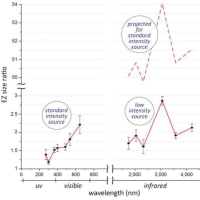解熱剤を使用してはいけない理由、そしてなぜ「放っておく」べきなのか
関連記事
2023/08/10改訂 ビタミンCによる風邪・インフルエンザへの対処
https://expose-news.com/2023/11/10/why-we-shouldnt-medicate-to-reduce-fever/
Why we shouldn’t medicate to reduce fever and why we should “let it ride”
熱を下げるために薬を服用すべきではない理由、そしてなぜ「放っておく」べきなのか
The Expose
BY RHODA WILSON ON NOVEMBER 10, 2023
ローダ・ウィルソン、2023 年 11 月 10 日
In most cases, there’s no reason to fear a fever.
ほとんどの場合、発熱を恐れる必要はありません。
Increasing research supports the “let it ride” philosophy, which states that fever is protective and should be allowed to run its course.
増加する研究は、発熱は身を守るものであり、自然に放っておくべきであるという「放っておく」哲学を裏付けるものです。
In most cases, rest and plenty of fluids are all that’s needed when a fever strikes.
ほとんどの場合、発熱したときに必要なのは休息と十分な水分補給だけです。
Using fever-reducing medications may prolong the illness.
解熱剤を使用すると病気が長引く可能性があります。
When critically ill patients were aggressively treated to reduce fever, the study had to be stopped early because so many people in the aggressive treatment group died compared to the group whose fevers weren’t treated.
重症患者が熱を下げるために積極的な治療を受けた場合、熱を下げる治療を受けなかったグループと比較して、積極的な治療グループでは非常に多くの人が死亡したため、研究は早期に中止されなければなりませんでした。
In people with influenza, using fever-reducing drugs is linked to a 5% increase in mortality.
インフルエンザにかかった人が解熱剤を使用すると、死亡率が 5% 増加します。
++++++++++++++++++++++++++++
About the Author
Dr. Joseph Mercola is the founder and owner of Mercola.com, a Board-Certified Family Medicine Osteopathic Physician, a Fellow of the American College of Nutrition and a New York Times bestselling author. He publishes multiple articles a day covering a wide range of topics on his website Mercola.com.
著者について
ジョセフ・マーコラ博士は、Mercola.com の創設者兼所有者であり、認定家庭医学オステオパシー内科医であり、アメリカ栄養学会のフェローであり、ニューヨーク・タイムズのベストセラー作家でもあります。 彼は、Web サイト Mercola.com で、幅広いトピックをカバーする 1 日に複数の記事を公開しています。
Never Do This When a Fever Strikes: A Fatal Mistake
熱が出たら絶対にやってはいけない:致命的な間違い
ジョセフ・マーコラ博士
I originally wrote this article 12 years ago.
この記事を最初に書いたのは 12 年前です。
But the topic is so important that I wanted to publish an update spreading the word that, in most cases, there’s no reason to fear a fever.
しかし、このテーマは非常に重要であるため、ほとんどの場合発熱を恐れる必要はないという情報を広める最新情報を公開したいと思いました。
Reaching for fever-reducing medications right away is also typically counterproductive and may make it take longer for you to get better.1,2
すぐに解熱剤を服用することも通常は逆効果であり、症状が良くなるまでにより長い時間がかかる可能性があります。1、2
Fever is a sign that your, or your child’s, immune system is working at its best.
発熱は、あなたまたはあなたのお子様の免疫システムが最高の状態で機能していることを示しています。
Virtually all animals – and even fish3 – naturally develop a fever when they’re fighting a bacterial or viral illness.
事実上すべての動物、さらには魚3も、細菌性またはウイルス性の病気と闘っているときに自然に発熱します。
This response occurs because it improves your body’s ability to get rid of infection.
この反応は、体の感染を排除する能力が向上するために起こります。
Fever Benefits Your Body
発熱は体に利益をもたらす
When an organism invades your body, it triggers the release of pyrogen, a substance that signals your brain’s hypothalamus to raise your body’s temperature.
微生物が体に侵入すると、脳の視床下部に体温を上げるよう信号を送る物質である発熱物質の放出が引き起こされます。
This is done through a number of different mechanisms, including:
これは、次のようなさまざまなメカニズムを通じて行われます
・Shivering
・震え
・Release of the hormone TRH
・TRHというホルモンの分泌
・Increasing your metabolic rate
・代謝を上げる
・Restricting blood flow to the skin to minimise heat loss
・皮膚への血流を制限し、熱の損失を最小限に抑えます。
・Piloerection (raising the small hairs), which suppresses sweating, a cooling mechanism
・冷却機構である発汗を抑える立毛(細かい毛を起こす)
The fever, in turn, launches a number of beneficial body processes, including immune-protective mechanisms, that either directly or indirectly help ward off the invading bacteria or virus.
発熱は次に、免疫防御機構を含む多くの有益な体のプロセスを開始し、直接的または間接的に侵入する細菌やウイルスを防ぐのに役立ちます。
For instance, temperatures from 104 to 105.8 degrees Fahrenheit (40 to 41 degrees Celsius) reduce the replication rate of poliovirus in cells by 200-fold, while increasing the susceptibility of Gram-negative bacteria to antibody destruction.4
たとえば、華氏 104 ~ 105.8 度 (摂氏 40 ~ 41 度) の温度では、細胞内でのポリオウイルスの複製速度が 200 分の 1 に低下しますが、その一方で、グラム陰性菌の抗体破壊に対する感受性が増加します。4
“Given the complexity of these immune mechanisms, it is remarkable that fever-range temperatures stimulate almost every step involved in this process, promoting both innate and adaptive immunity,” researchers wrote in Nature Reviews Immunology.5
「これらの免疫機構の複雑さを考えると、発熱範囲の温度がこのプロセスに関与するほぼすべての段階を刺激し、自然免疫と適応免疫の両方を促進することは注目に値します」と研究者らは Nature Reviews Immunology に書いています。5
“Febrile temperatures serve as a systemic alert system that broadly promotes immune surveillance during challenge by invading pathogens.”6
「高熱は、病原体侵入時の免疫監視を広範に促進する全身的な警報システムとして機能します。」6
Some of these wide-reaching benefits include:
これらの広範なメリットには次のようなものがあります。
Increase in antibodies – cells trained to attack the exact type of invader that your body is suffering from
抗体の増加 – あなたの体が苦しんでいる正確なタイプの侵入者を攻撃するように訓練された細胞
More white blood cells are produced to help fight off the invading bugs
侵入する微生物と戦うためにより多くの白血球が生成されます
More interferon, a natural antiviral and anticancer substance, is produced, which helps block the spread of viruses to healthy cells
天然の抗ウイルス物質および抗がん物質であるインターフェロンがより多く生成され、健康な細胞へのウイルスの拡散を阻止するのに役立ちます。
Walling off of iron, which bacteria feed on
バクテリアの餌となる鉄を壁で囲う
Increased temperature, which directly kills microbes (most bacteria and viruses grow better at temperatures lower than the human body)
微生物を直接殺す温度の上昇(ほとんどの細菌やウイルスは人体よりも低い温度でよりよく増殖します)
Improved ability of certain white blood cells to destroy bacteria and infected cells
特定の白血球の細菌や感染細胞を破壊する能力の向上
Fever also impairs the replication of many bacteria and viruses
発熱は多くの細菌やウイルスの複製も阻害します
Fever? Let It Ride
熱? そのままにして置け
“The fever response is a hallmark of infection and inflammatory disease and has been shaped through hundreds of millions of years of natural selection,”7 yet many health care providers still consider it dangerous and worthy of treating because it causes discomfort.
「発熱反応は感染症や炎症性疾患の特徴であり、何億年にもわたる自然選択によって形作られてきました。」7にもかかわらず、多くの医療提供者は依然として、発熱は不快感を引き起こすため危険であり、治療する価値があると考えています。
Scientists also continue to debate fevers’ merits.
科学者たちはまた、発熱のメリットについて議論を続けています。
One side favours the idea that fever should be suppressed because of its high metabolic costs.
一方では、発熱は代謝コストが高いため、発熱を抑制する必要があるという考えを支持しています。
Every 1.8oF rise in body temperature requires a 10% to 12.5% increase in metabolic rate,8 which is significant.
体温が 1.8oF 上昇するごとに、代謝率が 10% ~ 12.5% 増加する必要があります 8。これは重要です。
This is one of the reasons why you frequently lose weight when you have a fever.
これが、発熱時に体重が減少することが多い理由の 1 つです。
However, increasing research supports the “let it ride” philosophy, which contends that fever is protective.9
しかし、増加する研究は、発熱が身を守るものであると主張する「放っておく」哲学を裏付けるものです9。
Writing in the Journal of Thoracic Disease, researchers with the University of Miami Miller School of Medicine described a classic 1975 study10 on fever and survival in iguanas infected with bacteria:11
マイアミ大学ミラー医学部の研究者らは、Journal of Thoracic Disease に寄稿し、細菌に感染したイグアナの発熱と生存に関する古典的な 1975 年の研究 10 について次のように述べています。11
He gave them the opportunity to seek heat via sunlamps and all but one sought the warmth to raise their temperature.
彼は彼らに太陽光線で熱を求める機会を与え、1匹を除いて全員が体温を上げるために暖かさを求めました。
The one who did not was the only one who died. Next, he injected the iguanas with bacteria and gave them antipyretics [fever-reducing drugs].
そうしなかった1匹だけが死んだ1匹だった。 次に、イグアナに細菌を注射し、解熱剤を投与しました。
The iguanas that were able to mount a fever despite the antipyretic were the only ones that survived.
解熱剤を投与しても発熱したイグアナだけが生き残った。
A 1987 study on rabbits also found that administering fever-reducing drugs caused more harm than good.
ウサギに関する1987年の研究でも、解熱剤の投与は良いことよりも害の方が大きいことが判明した。
The team found fever suppression in the animals “had a markedly deleterious effect on the course of infection, resulting in an increased content of infectious virus in the mesenteric lymph nodes, increased mortality, and retarded recovery in animals that survived the infection.”12
研究チームは、動物の発熱抑制が「感染の経過に著しく悪影響を及ぼし、その結果、腸間膜リンパ節内の感染性ウイルスの含有量が増加し、死亡率が増加し、感染から生き残った動物の回復が遅れた」ことを発見した12。
Similar striking findings have been found in people, specifically critically ill patients in the intensive care unit.
同様の驚くべき発見が人々、特に集中治療室にいる重症患者でも見つかっています。
One group of patients was treated aggressively for fever, receiving acetaminophen every six hours if their temperature rose above 101.3oF (38.5oC).
ある患者グループは発熱に対して積極的に治療され、体温が101.3°F(38.5°C)を超えた場合には6時間ごとにアセトアミノフェンの投与を受けました。
The other group only received treatment if their fever reached 104oF (40oC), which consisted of acetaminophen and cooling blankets until their temperature went below 104oF.
もう一方のグループは、熱が40度(104度)に達した場合にのみ治療を受け、体温が104度(40度)を下回るまでアセトアミノフェンと冷却ブランケットが投与されました。
The study had to be stopped early because so many people in the aggressive treatment group died compared to the other group – seven deaths versus one, respectively.
積極的な治療グループでは他のグループに比べて非常に多くの人が死亡したため、この研究は早期に中止されなければなりませんでした。それぞれ死亡者は7名、死亡者は1名でした。
“Aggressively treating fever in critically ill patients may lead to a higher mortality rate,” the team concluded.13
「重症患者の発熱を積極的に治療すると、死亡率が高くなる可能性がある」と研究チームは結論付けた。13
Another study, this time on fish, showed that allowing a fever to run its course cleared the infection in about half the time it took for animals without a fever to heal.14,15
今度は魚に関する別の研究では、発熱を放っておくと、発熱していない動物の治癒にかかる時間の約半分で感染が治癒することが示されました。14,15
In addition to rapidly clearing infection, fever helped control inflammation and repair tissue damage.
感染を迅速に除去することに加えて、発熱は炎症を制御し、組織の損傷を修復するのに役立ちます。
“We let nature do what nature does, and in this case, it was very much a positive thing,” study author and immunologist Daniel Barreda, with the University of Alberta, said in a news release.16
「私たちは自然のすることを自然に任せていますが、今回の場合、それは非常に前向きなことでした」と研究著者で免疫学者のアルバータ大学のダニエル・バレダ氏はニュースリリースで述べた。
“Every animal examined has this biological response to infection,” she says, suggesting that fever provides a strong evolutionary survival advantage.
「検査されたすべての動物は、感染症に対する生物学的反応を持っています」と彼女は言い、発熱が進化上の強力な生存上の利点をもたらすことを示唆しています。
Moderate Fever Is Protective Against Covid-19
中等度の発熱は新型コロナウイルス感染症に対する予防効果がある
Acute respiratory distress syndrome (“ARDS”), which involves programmed cell death in the lungs’ alveolar cells, is a primary cause of death in covid-19 patients.
肺の肺胞細胞のプログラムされた細胞死を伴う急性呼吸窮迫症候群(「ARDS」)は、新型コロナウイルス感染症患者の主な死因となっている。
The natural rise in body temperature that occurs during mild or moderate fever, however, may raise cellular levels of beneficial heat shock protein 70 (HSP70), which is protective in cases of sepsis-induced ARDS.
しかし、軽度または中等度の発熱中に起こる自然な体温上昇は、敗血症誘発性 ARDS の場合に保護作用を示す有益な熱ショックタンパク質 70 (HSP70) の細胞レベルを上昇させる可能性があります。
Writing in Frontiers in Medicine, researchers suggested that several hours of mild fever, defined as less than 101.8oF (38.8oC), is advantageous for covid-19 patients, “allowing lung cells to accumulate protective HSP70 against damages from the inflammatory response to the virus SARS-CoV-2.”17
研究者らは『Frontiers in Medicine』に寄稿し、数時間の微熱(摂氏101.8度(38.8度)未満と定義される)が新型コロナウイルス感染症患者にとって有利であると示唆した。
「肺細胞がウイルス SARS-CoV-2 に対する炎症反応による損傷から保護する HSP70 を蓄積できるようにします。」17
Again, simply allowing a mild or moderate fever to take its course helps increase HSP70, offering you a survival advantage:18
繰り返しますが、軽度または中等度の発熱を自然にさせるだけで HSP70 が上昇し、生存上の利点がもたらされます:18
HSP70s can use the energy from ATP hydrolysis to forcefully unfold and dismantle different types of aggregated and functional protein oligomers in the cell.
HSP70 は、ATP 加水分解からのエネルギーを利用して、細胞内のさまざまな種類の凝集した機能的なタンパク質オリゴマーを強制的に展開し、分解します。
Hence, it can drive conformational changes in various large cytotoxic protein aggregates and convert them into soluble, harmless, functional proteins.
したがって、さまざまな大きな細胞傷害性タンパク質凝集体の構造変化を引き起こし、それらを可溶性で無害な機能性タンパク質に変換することができます。
… Conversely, degenerative neuronal and muscular tissues in ageing nematodes and humans that systematically express lower cellular levels of HSP70s than young individuals are particularly fragile and stress-sensitive.
…逆に、若い個体よりも組織的にHSP70の細胞レベルが低い、老化した線虫やヒトの変性神経組織および筋肉組織は、特に脆弱でストレスに敏感です。
Cells with low HSP70 levels tend to spontaneously undergo apoptosis, and consequent tissue losses in ageing humans lead to progressive degenerative diseases.
HSP70 レベルが低い細胞は自然にアポトーシスを起こす傾向があり、その結果として高齢化したヒトでは組織の損失が進行性の変性疾患を引き起こします。
Because the ability to develop fever and accumulate HSP70 decreases with age, the team even suggested using thermotherapies or physical training to raise body temperature in these cases.
発熱し、HSP70を蓄積する能力は年齢とともに低下するため、研究チームは、このような場合に体温を上げるために温熱療法や身体トレーニングを使用することさえ提案した。
Scientists writing in Evolution, Medicine, and Public Health also suggested letting fever do its job, particularly in the pandemic era:19
進化、医学、公衆衛生の論文を執筆している科学者らも、特にパンデミックの時代には発熱に任せることを提案しています:19
For covid-19, many public health organisations have advised treating fever with medicines such as acetaminophen or ibuprofen.
covid-19 に関しては、多くの公衆衛生機関がアセトアミノフェンやイブプロフェンなどの薬で発熱を治療することを推奨しています。
Even though this is a common practice, lowering body temperature has not improved survival in laboratory animals or in patients with infections.
これは一般的な習慣ではありますが、体温を下げても実験動物や感染症患者の生存率は改善されていません。
Blocking fever can be harmful because fever, along with other sickness symptoms, evolved as a defence against infection.
発熱は他の病気の症状とともに、感染に対する防御として進化したものであるため、発熱を遮断することは有害な場合があります。
Fever works by causing more damage to pathogens and infected cells than it does to healthy cells in the body.
発熱は、体内の健康な細胞よりも病原体や感染した細胞に大きなダメージを与えることで作用します。
During pandemic covid-19, the benefits of allowing fever to occur probably outweigh its harms, for individuals and for the public at large.
新型コロナウイルス感染症のパンデミック中、個人にとっても一般大衆にとっても、発熱を許すことの利点はおそらくその害を上回ります。
Fever-Reducing Drugs May Backfire
解熱剤は逆効果になる可能性がある
In most cases, fever-reducing medications should be avoided, as they typically only suppress the natural healing mechanisms of the fever and prolong the illness.
ほとんどの場合、解熱薬は発熱の自然治癒メカニズムを抑制し、病気を長引かせるだけであるため、使用は避けるべきです。
For example, in people with influenza, using fever-reducing drugs is linked to a 5% increase in mortality.20
たとえば、インフルエンザにかかった人が解熱剤を使用すると、死亡率が 5% 増加します。20
Even the American Academy of Paediatrics (“AAP”) warned against “fever phobia” and overuse of fever-reducing drugs:21
アメリカ小児科学会 (「AAP」) でさえ、「発熱恐怖症」と解熱剤の過剰使用に対して警告しています:21
Appropriate counselling on the management of fever begins by helping parents understand that fever, in and of itself, is not known to endanger a generally healthy child.
発熱管理に関する適切なカウンセリングは、発熱自体が一般に健康な子どもを危険にさらすものではないことを親が理解できるようにすることから始まります。
In contrast, fever may actually be of benefit …
対照的に、発熱は実際には有益である可能性があります…
When counselling a family on the management of fever in a child, paediatricians and other health care providers should minimise fever phobia and emphasise that antipyretic use does not prevent febrile seizures.
小児の発熱管理について家族にカウンセリングを行う場合、小児科医やその他の医療提供者は、発熱恐怖症を最小限に抑え、解熱剤の使用が熱性けいれんを予防するものではないことを強調する必要があります。
Further, in their advice for parents wondering if they should treat their child’s fever, AAP states, “The key is to watch your child’s behaviour. If they are drinking, eating, sleeping normally, and are able to play, you do not need to treat the fever.
さらに、子供の発熱を治療すべきかどうか迷っている親へのアドバイスの中で、AAPは次のように述べています。「重要なのは、子供の行動を観察することです。 正常に飲み、食べ、睡眠し、遊ぶことができている場合は、熱を治療する必要はありません。
Instead, you should wait to see if the fever improves by itself.”22
代わりに、熱が自然に改善するかどうかを確認する必要があります。」
Remember, the point of the fever is to stimulate the immune system and create an inhospitable environment for invading organisms, essentially turning up the heat high enough that the invading microbes cannot live.
覚えておいてください、発熱の目的は免疫システムを刺激し、侵入微生物にとって住みにくい環境を作り出すことであり、基本的には侵入微生物が生きられないほど熱を高くすることです。
So, anytime you lower a fever artificially you’re making your body more hospitable to the invading pathogens.
つまり、人為的に熱を下げると、体が病原体に対して侵入しやすくなることになります。
Lowering a fever with medications also masks your symptoms, which may lead you to return to your normal activities too soon, when your body could still benefit from extra rest.
また、薬で熱を下げると症状が隠れてしまうため、体が十分な休息をとれるはずなのに、すぐに通常の活動に戻ってしまう可能性があります。
The drugs may also prolong illness. In a study of acetaminophen for children with chickenpox, the drug led to prolonged itching and time to scabbing compared to placebo treatment.23
薬は病気を長引かせる可能性もあります。 水痘の子供に対するアセトアミノフェンの研究では、プラセボ治療と比較して、この薬によりかゆみが長くなり、かさぶたができるまでの時間が長くなりました。23
Further, a study of adults with colds found that aspirin and acetaminophen suppressed production of antibodies and increased cold symptoms, with a trend toward longer infectiousness.24
さらに、風邪をひいている成人を対象とした研究では、アスピリンとアセトアミノフェンが抗体の産生を抑制し、風邪の症状を増加させ、感染力が長くなる傾向があることが判明しました24。
These medications also carry risks of side effects, including liver damage with acetaminophen, stomach upset with Ibuprofen and Reye’s syndrome with aspirin.
これらの薬には、アセトアミノフェンによる肝障害、イブプロフェンによる胃のむかつき、アスピリンによるライ症候群などの副作用のリスクもあります。
It’s recommended that children under 19 not be given aspirin when they have a fever, due to the link to Reye’s syndrome.
ライ症候群との関連性があるため、19歳未満の子供には発熱時にはアスピリンを投与しないことが推奨されています。
When Is a Fever Dangerous?
発熱はいつ危険ですか?
It’s rare for a fever to rise higher than 104oF or 105oF (40oC), and as long as your child isn’t distressed, there is no harm in letting a fever run its course.
発熱が 104 °F または 105 °F (40 °C) を超えることはほとんどありません。
そして、お子さんが苦しまない限り、熱が治まるまで放置することに害はありません。
Keep in mind also that fevers tend to spike in the late afternoon and evening, so a slight increase in fever during this time is not necessarily cause for alarm.
また、熱は午後遅くと夕方に急上昇する傾向があるため、この時間帯のわずかな発熱は必ずしも心配する必要はないことにも留意してください。
In most cases, rest and plenty of fluids is all that’s needed when a fever strikes.
ほとんどの場合、発熱時に必要なのは休息と十分な水分補給だけです。
Fever does increase fluid loss, so it’s important to give your child plenty of fluids, even if they don’t feel thirsty, to prevent dehydration.
発熱により体液の損失が増加するため、のどが渇いていると感じていなくても、脱水症状を防ぐために子供に十分な水分を与えることが重要です。
There are some instances, however, when a fever does require medical attention.
ただし、発熱により医師の診察が必要になる場合もあります。
This includes:
これは、以下のものを含みます:
・Fever in an infant younger than 3 months (at any temperature)
・生後3か月未満の乳児の発熱(体温は問わず)
・Fever above 102.2oF (39oC) in children between 3 months and 36 months, if they appear ill
・生後3ヵ月から36ヵ月までの小児で39度以上の発熱があり、体調が悪そうな場合
・Anytime a fever rises over 104.5oF (40oC)
・発熱が40℃以上になったとき
・In some cases of sepsis or neurological injuries, uncontrolled fever may lead to worse outcomes25
・敗血症や神経損傷の一部のケースでは、発熱が制御されていないと、より悪い転帰につながる可能性があります25
In children 5 years and under, fever can also lead to a seizure, known as a febrile seizure.
5 歳以下の小児では、発熱によって熱性けいれんとして知られる発作が起こることもあります。
Though this can be frightening, it typically will cause no lasting effects.
これは恐ろしいことかもしれませんが、通常は永続的な影響を引き起こすことはありません。
During a febrile seizure, lay your child on his side or stomach on the ground, loosen any tight clothing and support the child to prevent injury.
熱性発作が起こっている間は、お子様を地面に横向きまたはうつぶせに寝かせ、きつい衣服を緩め、怪我を防ぐためにお子様を支えてください。
When the seizure stops, you should seek medical attention right away to be sure the seizure was not caused by something other than the fever, such as meningitis or bacteria in the blood.
発作が止まったら、直ちに医師の診察を受けて、髄膜炎や血液中の細菌など、発熱以外の原因で発作が引き起こされていないことを確認する必要があります。
However, remember that letting a fever run its course is typically the best choice to fight off a viral or bacterial infection.
ただし、通常、ウイルスや細菌の感染を防ぐには、発熱を放置することが最善の選択であることを覚えておいてください。
You can further bolster your immune system’s ability to ward off pathogens and reduce the likelihood of developing a fever in the first place, by eating right, getting plenty of daily movement, using sound methods for stress relief and sleeping well.
正しく食事をし、毎日十分に体を動かし、健全なストレス解消法を使用し、よく眠ることで、病原体を撃退する免疫システムの能力をさらに強化し、そもそも発熱の可能性を減らすことができます。
Sources and References
- 1, 14, 16 Science Daily March 15, 2023
- 2, 3, 15 Immunology and Inflammation March 14, 2023
- 4, 5, 6, 7, 8, 20, 25 Nat Rev Immunol. 2015 Jun; 15(6): 335–349
- 9, 11 J Thorac Dis. 2015 Dec; 7(12): E633–E636
- 10 Science. 1975 Apr 11;188(4184):166-8
- 12 J Infect Dis. 1987 May;155(5):991-7. doi: 10.1093/infdis/155.5.991
- 13 Surg Infect (Larchmt). 2005 Winter;6(4):369-75. doi: 10.1089/sur.2005.6.369
- 17, 18 Front Med (Lausanne). 2020; 7: 564170
- 19 Evol Med Public Health. 2021; 9(1): 26–35
- 21 American Academy of Pediatrics March 2011, Volume 127, Issue 3
- 22 AAP, Healthychildren.org, Treating Your Child’s Fever
- 23 J Pediatr. 1989 Jun;114(6):1045-8. doi: 10.1016/s0022-3476(89)80461-5
- 24 The Journal of Infectious Diseases December 1, 1990
About the Author
Dr. Joseph Mercola is the founder and owner of Mercola.com, a Board-Certified Family Medicine Osteopathic Physician, a Fellow of the American College of Nutrition and a New York Times bestselling author. He publishes multiple articles a day covering a wide range of topics on his website Mercola.com.
著者について
ジョセフ・マーコラ博士は、Mercola.com の創設者兼所有者であり、認定家庭医学オステオパシー内科医であり、アメリカ栄養学会のフェローであり、ニューヨーク・タイムズのベストセラー作家でもあります。 彼は、Web サイト Mercola.com で、幅広いトピックをカバーする 1 日に複数の記事を公開しています。
























